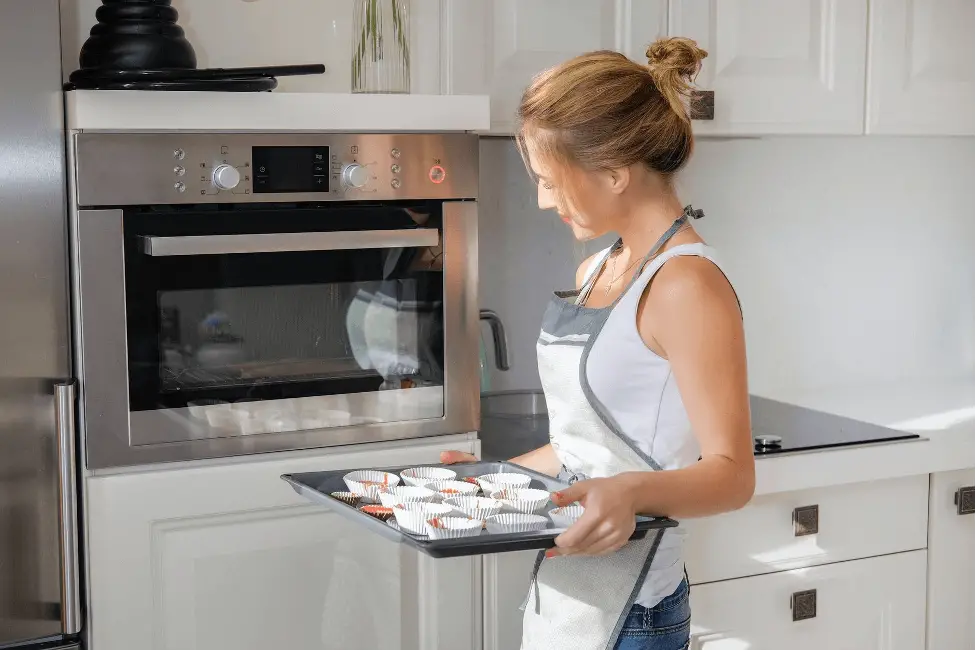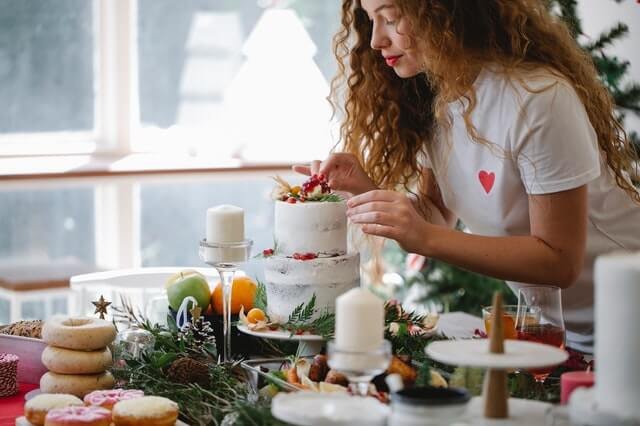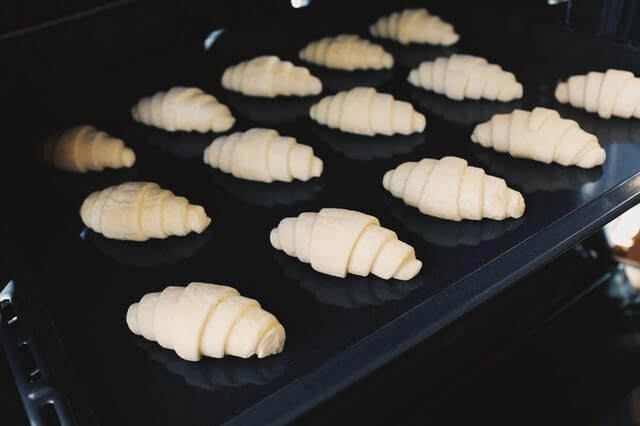Last Updated on August 13, 2023 By Emma W. Thomas
Most common glassware, like borosilicate, has a bake temperature limit of around 450-500°F (232-260°C). Temperatures exceeding this can cause the glass to shatter. Always check the manufacturer’s specifications.
What Is The Glassware Bake Temperature Limit?

The glassware bake temperature limit is an essential aspect to take into account when baking with glassware. Knowing the maximum temperature will help in preventing unnecessary accidents that may occur due to overheating. This listicle outlines the key points surrounding the glassware bake temperature limit:
- General Glassware Limit: Most common glassware, like Pyrex or Anchor Hocking, have a bake temperature limit of around 350°F (177°C). This temperature is safe for most traditional baking uses, but it is always essential to check the manufacturer’s specific guidelines before use.Table 1: Common Glassware Bake Temperature LimitBrandTemperature LimitPyrex350°F (177°C)Anchor Hocking350°F (177°C)
- Higher Heat Resistance: Some modern glassware is specially made to withstand higher temperatures, sometimes up to 500°F (260°C). These include brands such as Arcuisine and Marinex.Table 2: Higher Heat Resistant Glassware Temperature LimitBrandTemperature LimitArcuisine500°F (260°C)Marinex500°F (260°C)
- Borosilicate Glass: Borosilicate glassware, known for its superior heat resistance, can usually withstand temperatures as high as 572°F (300°C). These are perfect for recipes that require very high temperatures.
- Pre-Heating Is Essential: Glassware is not known to conduct heat very well. Therefore, extensively pre-heating the oven before putting your glassware in prevents temperature shock, which could cause your glassware to shatter.
- Avoiding Sudden Temperature Changes: Even if your glassware can withstand high bake temperatures, it’s vital to avoid exposing hot glass directly to cold temperatures or vice versa, as this can cause thermal shock resulting in cracks or breakage.
- Manufacturer’s Instructions: Always refer to the manufacturer’s instructions before using glass bakeware. They will provide the exact temperature limit and any specific recommendations for safe use.
Figuring out what type of glass you’re dealing with and understanding its limits is the key to successful and safe baking. Always remember that regardless of your glassware’s bake temperature limit, gradual changes in temperature are less likely to cause damage than sudden ones.
Can We Keep The Glassware Inside The Oven During An Auto Cleaning Cycle?
Yes, it is fine to keep the glassware inside the oven during an auto-cleaning cycle. But do not take it out instantly and rinse it with cold water or set it on a cold surface. If you do so, it may risk the breakage of the glassware.
What Measure Should We Need To Take To Avoid Thermal Shock To The Glassware During A Self-Cleaning Cycle?
Almost all types of glassware will stay safe while self-cleaning. What you need to look into is pointed out in the next few lines.
Well, after self-cleaning, never set the glassware on a cold surface or run cold water over it. Keep the glassware inside the oven and let the temperature drop to room temperature level. Typically, during self-cleaning, the temperature should be 500 c.
So if you can leave the glassware to cool down gradually, there would be no scope for thermal shock.
If We Open The Hot Oven, Will The Thermal Shock Shatter The Glassware?
You don’t need to worry about that. Even if you open the oven when it is hottest and simultaneously cool air passes inside, the glassware will not get any thermal shock. If it does not get a thermal shock, then shattering has no scope.
You would need to do something extreme like pouring a glass of cold water while the oven is in the middle of the self-cleaning cycle to get a thermal shock and then break.

How To Know If The Glassware Is Oven-Safe?
Usually, clear glassware is oven safe unless it has any metallic edge and will consist of a note at the bottom of the glassware that it is ovenproof. This is an easy way to figure out, but if you are daring to test, then we have something for you.
Insert the test glassware and an oven-safe cup in the oven. Set the temperature to 350 degrees for 3 minutes. After the completion of 3 minutes, if you see the test glassware has become very hot than the oven-proof cup, then it is not oven-proof.
How To Find If The Glassware Is Heat Resistant?
Typically, glassware made of borosilicate is heat resistant. A borosilicate glass consists of boron trioxide and silica. They have a very low coefficient of thermal expansion.
To be more specific, borosilicate glass has higher thermal stability than normal glass. Also, heat-resistant glassware can withstand 400° of high temperature.
Does Glassware Take Longer To Bake?
To bake a soft and spongy cake is not an easy job. The baking itself is more like a science. Whatever you bake, special attention to gluten formation, starch gelatinization, humidity, and the temperature should remain exact to the recipe.
Glassware can evenly distribute the heat to bake at an even rate. But there is a drawback to glassware. If the recipe requires a high temperature, your glassware might not be able to withstand the high weather. It may get shattered.
Moreover, glassware cannot adapt to rapid temperature fluctuations. Also, glassware is low in heat conduction. So it requires more time to warm up.
However, it will remain warm for a long duration.
Which One Is Better For Baking Between A Glass Pan And Metal Pan?
The experts have made a hypothesis and experimented with whether a glass pan is better or a metal pan to bake to conclude.
Both the glass pan and the metal pan are suitable for baking. However, there are some different results that you will get to see. Let’s see the table to know more.
| Category | Glass Pan | Metal Pan |
| Warm-up a | It takes more time to warm up. | It takes less time to warm up. |
| Temperature | It cannot withstand high temperatures, and exposure to extreme heat or cold may lead to breakage. | It can withstand high temperatures. |
| Bake with acidic ingredients | Glassware is better to use while baking acidic ingredients. | Metal pan may react to an acidic ingredient and leave a metallic taste in your dish. |
| Limit | You can bake up to a temperature of 400 degrees in a glass pan. | The metal pan can tolerate temperatures up to 500 degrees. |
Is Glass Bakeware Safe?
Any tempered glass bakeware can break occasionally. New bakeware comes with instructions that you should not neglect. The manufacturer of glass bakeware has mentioned that it is safe to use.
Still tempering or shattering while baking concerns you, then use glassware for other non-baked items and use metal bakeware for baking.
How To Minimize The Potential Glass Bakeware Shattering?
Firstly, it is a good idea to read the manual instructions and follow them. Most people forget about it and discard the instruction manual. So we have come up with some general tips you can adopt as precautions.
- Do not higher the temperature above 400°
- Never keep hot bakeware on a cold or wet surface.
- Avoid fluctuations in temperature like from a freezer to oven and oven to sink.
- Do not use it on the stovetop, in a toaster oven, or under a broiler.
- Always preheat the oven before inserting glass bakeware.
- Avoid adding liquid to hot glass bakeware.
- Do not use glass bakeware if it has a crack, scratch, or chipped.
- Add liquid before heating.
Why Is It Necessary To Preheat The Oven Before Using Glassware?
Using glassware needs an adequate amount of care. You will often notice that glassware has instructions like “for the preheated oven only”. You should preheat your oven because it will not only save time but also may react to the heat during baking.
How Long Should I Preheat An Oven Before Baking?
The preheat timing depends on the oven and the recipes you are making. If the preparation time is one hour, then set the time for at least 20 minutes before you finish your dish preparation. Twenty minutes of timing is sufficient for the oven to come to the right temperature.
In the case of an electric convection oven, heating up will take just 10 minutes. So set the timer right to get a perfect baking dish.
Can I Put Food Inside The Oven While It Is Preheating?
Not every food needs preheating. Somewhat it depends on the dish you are preparing. Preheating is necessary for food items that want a certain amount of heat from the very beginning to achieve a specific outcome.
But most food items need to preheat to cook appropriately. These food items are vegetables, meats, pastries, and bread. So you can put food inside the oven. There is less chance of having negative consequences.
Can I Bake A Cake Without Preheating The Oven?
The answer is a simple No. The first step to bake a cake is to preheat the oven. Preheating helps to set the temperature at the required state. Ingredients like yeast, baking soda, or baking powder need good heat to rise and form brownish and a smooth texture. If you do not preheat the oven, the cake will come out hard, undercooked, heavy, and rubbery.
Again, a preheated oven will bake the cake from the inside before it turns brownish from the outside.
Final thought
Baking needs perfection. Pay attention to the temperature, ingredients and use trays in which you can confidently bake. Initially, all these things may appear challenging to execute, but gradually you will master them.
Try to use borosilicate glassware or metalware for baking and set the temperature accordingly. Do not use any chipped, broken, or scratched glassware. Remember, it is better to take precautions to avoid blunders to get a perfectly baked item.
References:
https://www.foodnetwork.com/how-to/packages/food-network-essentials/is-pyrex-oven-safe
https://camblab.info/what-are-the-temperature-limits-for-pyrex-glassware/
Emma is a graduate of Domestic Science or Family and Consumer Sciences (Home Economics) from the University of Wisconsin. She has 7 years of experience Working with the strategic section of BestBuy and now writing full-time for Homeeon.
From Managing the Home, Interiors, Cleaning, and Exteriors to Gardening and everything about Making A Home Liveable – is her passion and this Homeeon is the result of this.
Emma loves decorating her home with the best stuff found online. She cares about quality over anything and writes reviews about them here in Homeeon. Get in touch with her over Pinterest.
Keep reading her blogs.
